Charlotte Bastion, Glocal Sceneries #3, 2021/22. 3 spatial images in 3 stereoscopes
CHICAGO
Ideas on Landscape
Aug 19 - Sep 30, 2023
Opening Reception:
Saturday, Aug 19 from 1-4 pm
Tiger Strikes Asteroid Chicago is proud to present the second iteration of its TSA network 5x5 exchange with SCOTTY Berlin. The first iteration occurred in March-April 2022.
Exhibiting Artists:
Carl Baratta, Charlotte Bastian, Dan Devening, Kiki Gebauer, Simone Häckel, James Kao, Julia Krewani, Karen Linnenkohl, Norman W. Long, Christine Niehoff, Kushala Vora, Bettina Weiß, Scott Wolniak, Juliane Zelwies
“Landscape” is a term that encompasses the physical, ecological, and cultural characteristics of a particular geographic area or region. It refers to the visible features of an area of land, including natural elements such as mountains, rivers, valleys, and forests, as well as human-made elements such as buildings, roads, and agricultural fields. Landscapes are shaped by natural processes such as erosion, weathering, and deposition, as well as human interventions such as land use and management practices. Landscape is also a subjective concept that is influenced by the individual experiences, perceptions, and emotions of the people who interact with or imagine a particular terrain. A landscape can be viewed as a construct, an idea, a projection surface, a place of longing, a mirror that reflects our own desires, and/or a mood that we seek. A landscape is a complex tapestry of what may be ideal, heroic, sublime, frightening, and/or a testament to our exploitation of nature. “Ideas on Landscape” explores different artistic approaches to the theme of “landscape.” The exhibition is curated by the members of SCOTTY, an artist-run gallery from Berlin, and presents work by artists based in Berlin and Chicago.
Carl Baratta is constantly investigating different ways of compressing multiple moments into a single scene, a common conceit of miniature painting and Sienese imagery. His current work creates a sense of repetition and rhyming to create the underlying scaffolding of a structure that hopefully makes some semblance of sense.
Charlotte Bastian:
The “Glocal Series” is a series of photomontages presented as three-dimensional perceptible images in stereoscopes. The artworks discuss the actual and the reinterpreted, the invented, and the change of landscapes through current and past events and through human intervention. The spatial observation opens up a level of perception that the flat image cannot create—a depth of space is created, a feeling of being in the space that one is nevertheless only looking at. The fact that even unnatural spaces are combined with the means of collage, that perspectives and proportions are assembled differently, reinforces this effect in an almost paradoxical way.
Dan Devening:
The subject of these collages is formed by the structure and language of flags and banners—cultural, nationalistic and emblematic—and all the rhetoric that drives the symbolism and passion within. Dan Devening’s work finds its prime focus at the meeting point between object and viewer. In his recent collages, there is a shifting tension between dynamic gestural atmospheres and flat, geometric shapes that act to cancel out or redact the energy behind. One is left wondering about the hidden and obscured.
Kiki Gebauer works as a concrete artist. One focus of her reduced works is the thematization of color reflection. Used milk boxes, whose company imprints associate an intact nature, are used as an installation. The boxes cast a coloured glow on the walls. An illusory world, so to speak, like the dreams about our nature.
Simone Haeckel‘s work deals with the perception of people, animals, and places. The artwork Untitled (Still Life) is a composition that embodies the concept of “landscape as an idea.” It represents landscape not only as a physical space but one with emotional, cultural, and symbolic significance.
James Kao is an artist who makes still paintings and drawings that record his observations of the interaction between the built and unbuilt world. In the drawings on view, agriculture shapes the landscape in a strange and seemingly gentle way; the farmland fills the space between the village and the forest almost “naturally”.
In the drawn objects of Julia Krewani, textile surfaces are imitated. Crumpled, folded, rolled, or hanging, the paper sometimes resembles a plant or a landscape. Plaid blankets, striped clothes appear like randomly thrown landscapes. Laid in rhythmic waves, formed into canyons and piled up into hills, they flow through the space.
Blue Stripes is a blue fabric webs that runs through the terrain like a river, a frozen movement in space.
Karen Linnenkohl´s work deals with reflections of the landscape in a river. In the rhythm of the current, the waves create a continuously ongoing movement and transformation of the image. Through the inversion, the merging, and the layering of different snapshots, a unique reality is generated.
Norman W. Long:
On August 19, 2023 at 3:00 pm, Norman W. Long will perform a live mix composed of improvised electronics and field recordings of sounds that make up the character of the community, from local spaces such as Big Marsh, Marian R. Byrnes Park, and Jeffery Manor, as well as sonified data taken from plants on-site and data sets of soil, air, water, and demographics from the community area.
Christine Niehoff:
In the destroyed world of the film Soylent Green (1972), the main character called Sol realizes he can no longer bear to live in this environment and decides to end his life in a euthanasia clinic. In Theater 2, he drinks his lethal poison to light classical music and nostalgic images of landscapes that no longer exist. Dioramas are used in natural history museums to depict various scenes of nature frozen in time and space.
Transferring elements of a film scene, in itself a fictional moment frozen in time, to a diorama, allows Niehoff to play with notions of the artificiality and idealization of landscape and the way we imagine and remember forms of nature.
Kushala Vora’s work Unearthed was made in response to a conscious effort to recognize the colonial influence on the ways she perceives and behaves. Made by petrifying notebooks, Unearthed investigates the learning of standardization. The sculptures are made out of terracotta mixed with gravel, fossilized notebooks, and porcelain. Upon making the terracotta bases, the notebook from a paper factory she visited was covered in slip and layered with more books. While firing, the pages of the book burned away leaving behind a shell, a skin. The body—her body—became central to the holding of these layers of habits and conditionings.
Bettina Weiß:
The “Portraits of a Secret Landscape” series deals with nature and landscape in an abstract way. Each painting tells of a possible certain state of the inner geometry of the world, which manifests itself in all processes in the micro- and macrocosm. Represented by basic geometric shapes that Weiß paints in ever new variations, possibilities, and connections. The eye is confronted with a moving image, which begins to vibrate through color contrasts and the contrast of glaze and pasty application of the image, thereby going into communication with the viewer. The world in which we live is fragile— Weiß tries to make the immediate contact with universal laws of nature visible through the medium of painting.
For this series, Bettina Weiß chose the classic portrait format, in order to give viewers the opportunity to “walk“ in the painting, like an entrance, like a portal.
The two pieces Scott Wolniak is showing were made 20 years apart and sit at very different points in the arc of his practice. Where 11/02/00 (2000) is a video about painting, Resting Place (2020) is an actual painting. Where the video is loud and jittery, the painting is quiet and still. The single channel video, 11/02/00, made on the date of the title, is a comedic performance video depicting the artist painting “en plein-air” in the back of a moving pickup truck as it speeds through neighborhoods and industrial areas on the west side of Chicago,- interacting with potholes, traffic, passersby, a dog, and the police. The turbulence of the truck (bouncing, turning, starting and stopping) creates a slapstick physical comedy routine as the artist struggles to focus on the small canvas. The resulting painting is abstract and messy, occasionally depicting fleeting imagery, but primarily registering gestural marks that are generated as much by the external forces of the situation as by the artist’s hand. Intimate in scale and subtle in form, Resting Place is an exploratory abstract painting that encourages slow viewing. Utilizing paper pulp and pumice medium for texture, and luminosity built through layers of transparent pigment, Resting Place is a dreamy abstraction evocative of immersion in a misty landscape.
Juliane Zelwies:
Between the young forest and the hill (mellom Ungskogneset og Einåsen) is a plot of land located on a small island in northern Norway. It is home to many songbirds, both sedentary birds such as the great tit and migratory birds such as the European pied flycatcher who comes from Sub-Saharan Africa to northern Scandinavia each summer. While we humans perceive the habitat as a peaceful idyll, its soundscape is in fact the result of an elaborate and not necessarily peaceful communication between different birds. Anatomical drawings have a long tradition in natural sciences as a way to understand the world, for example, by comparing one species with another. Research has shown that some bird species such as crows, ravens and parrots are as intelligent as primates. Birdbrain is an anatomical drawing of a bird’s brain.
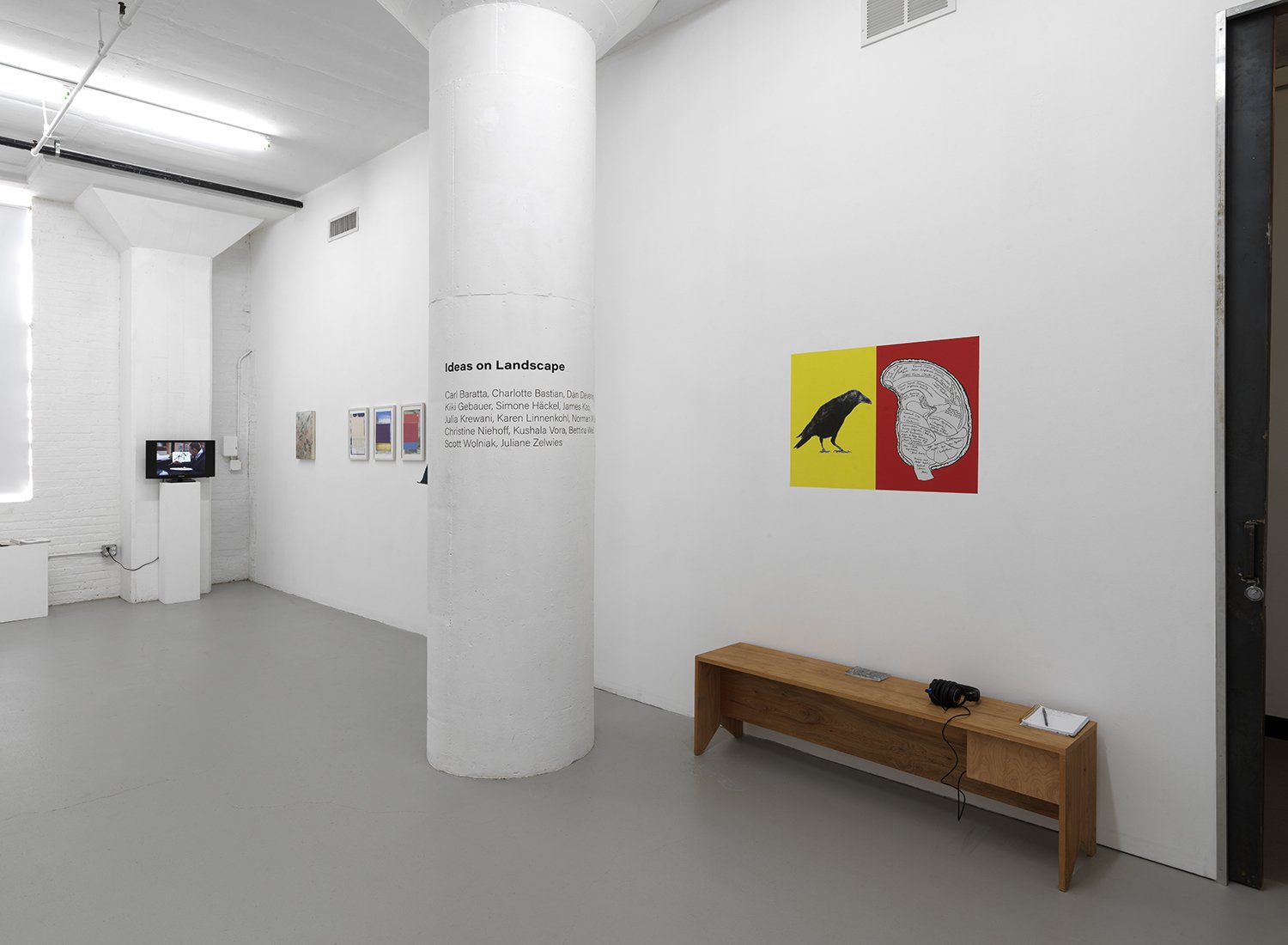
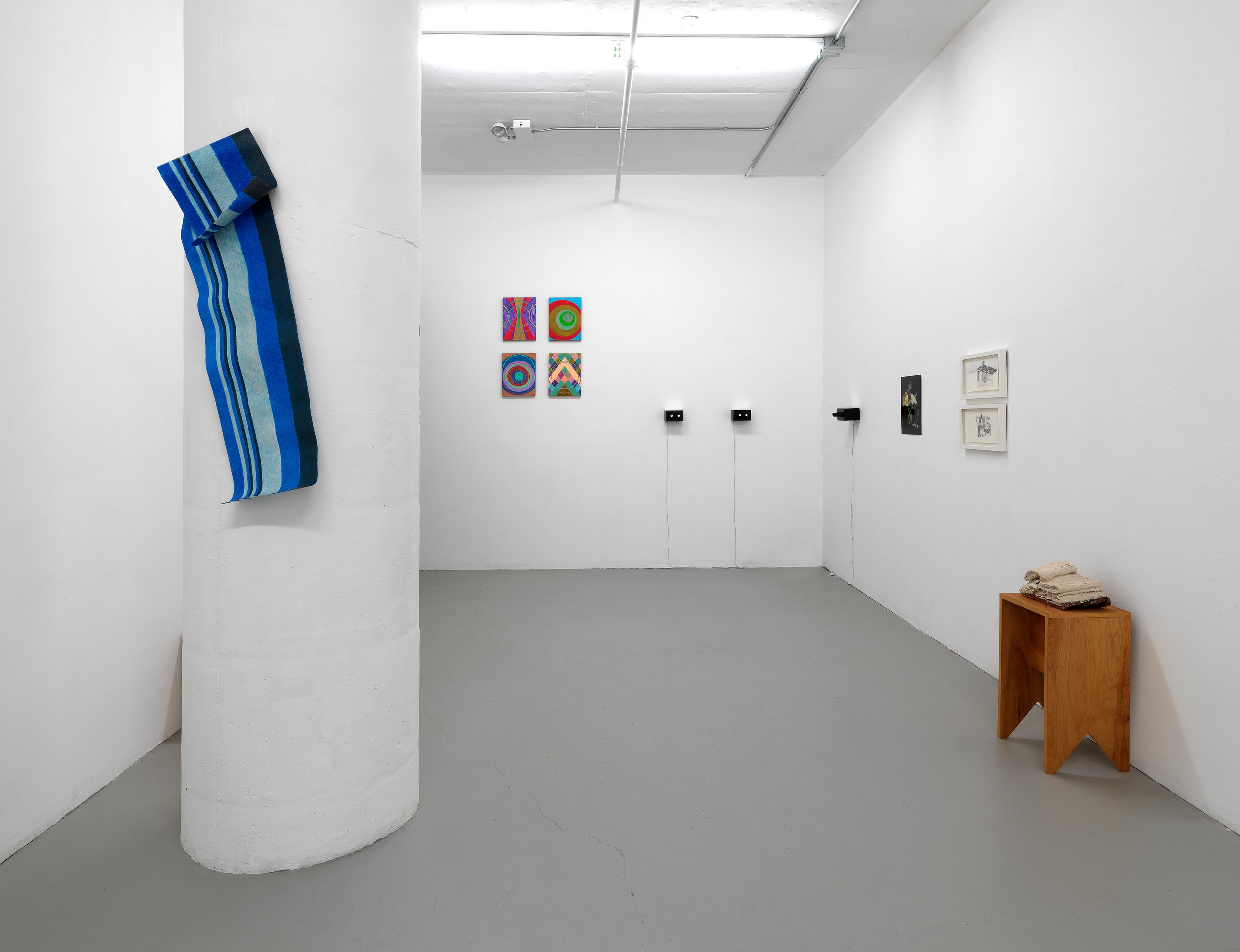
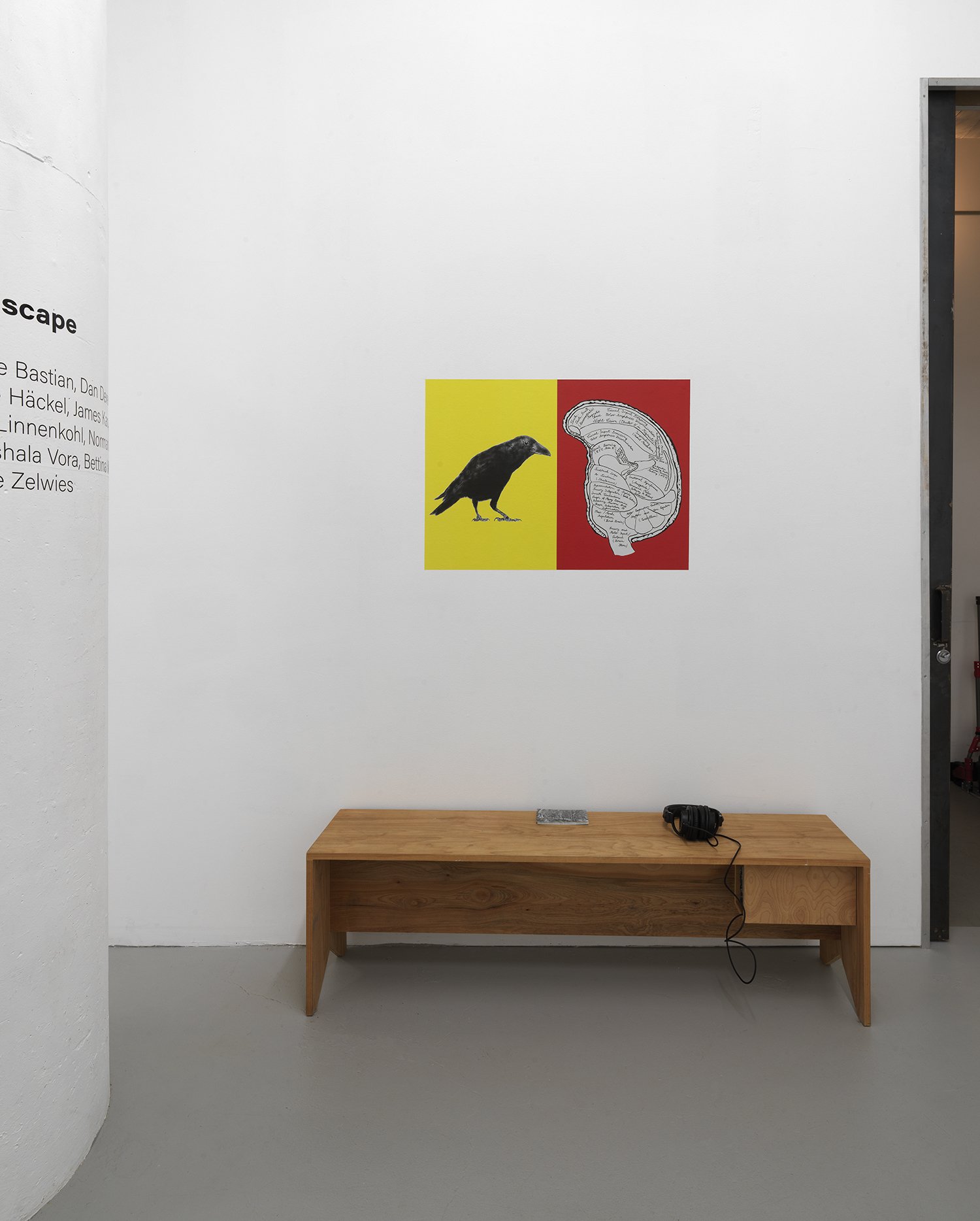
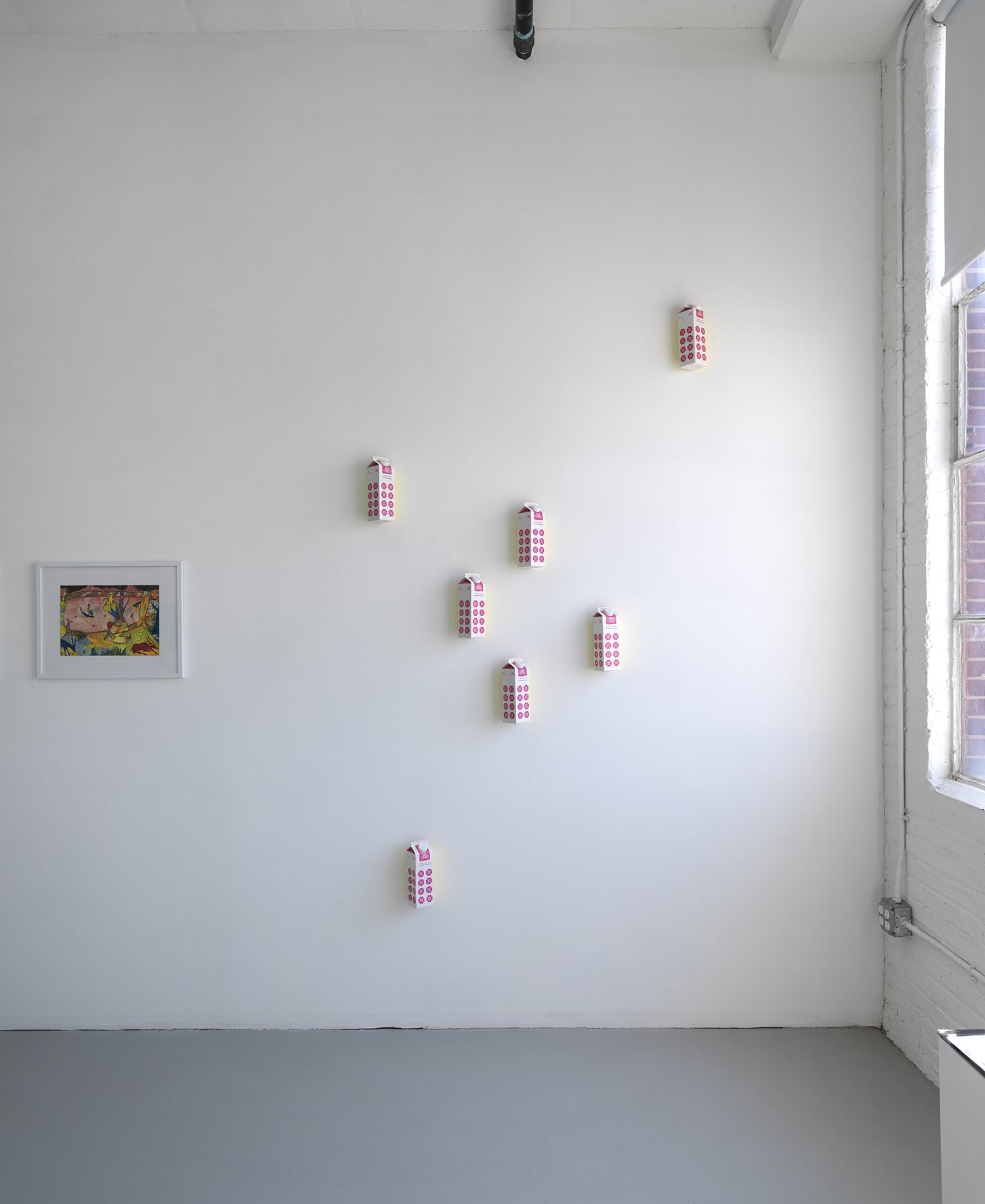
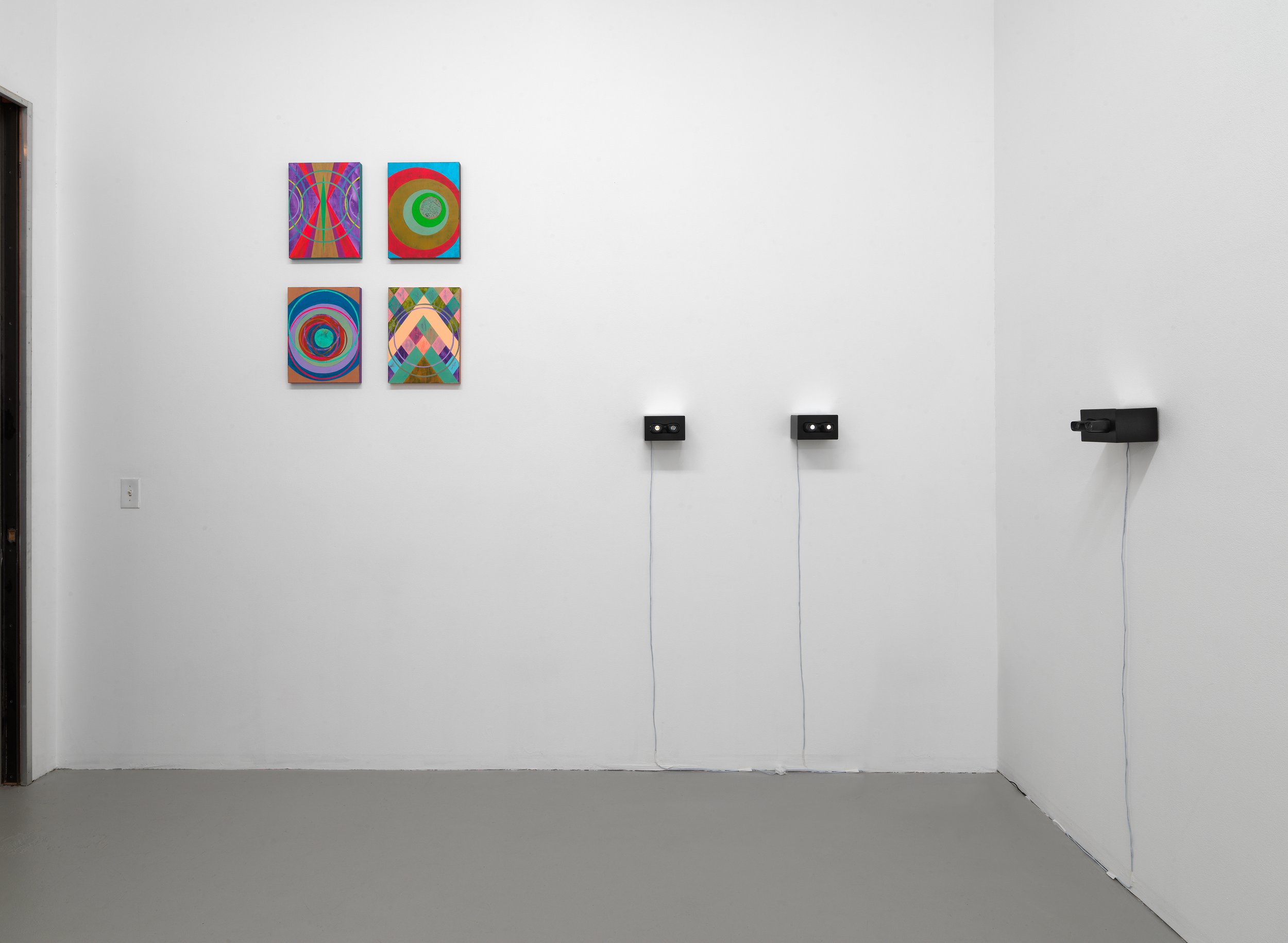
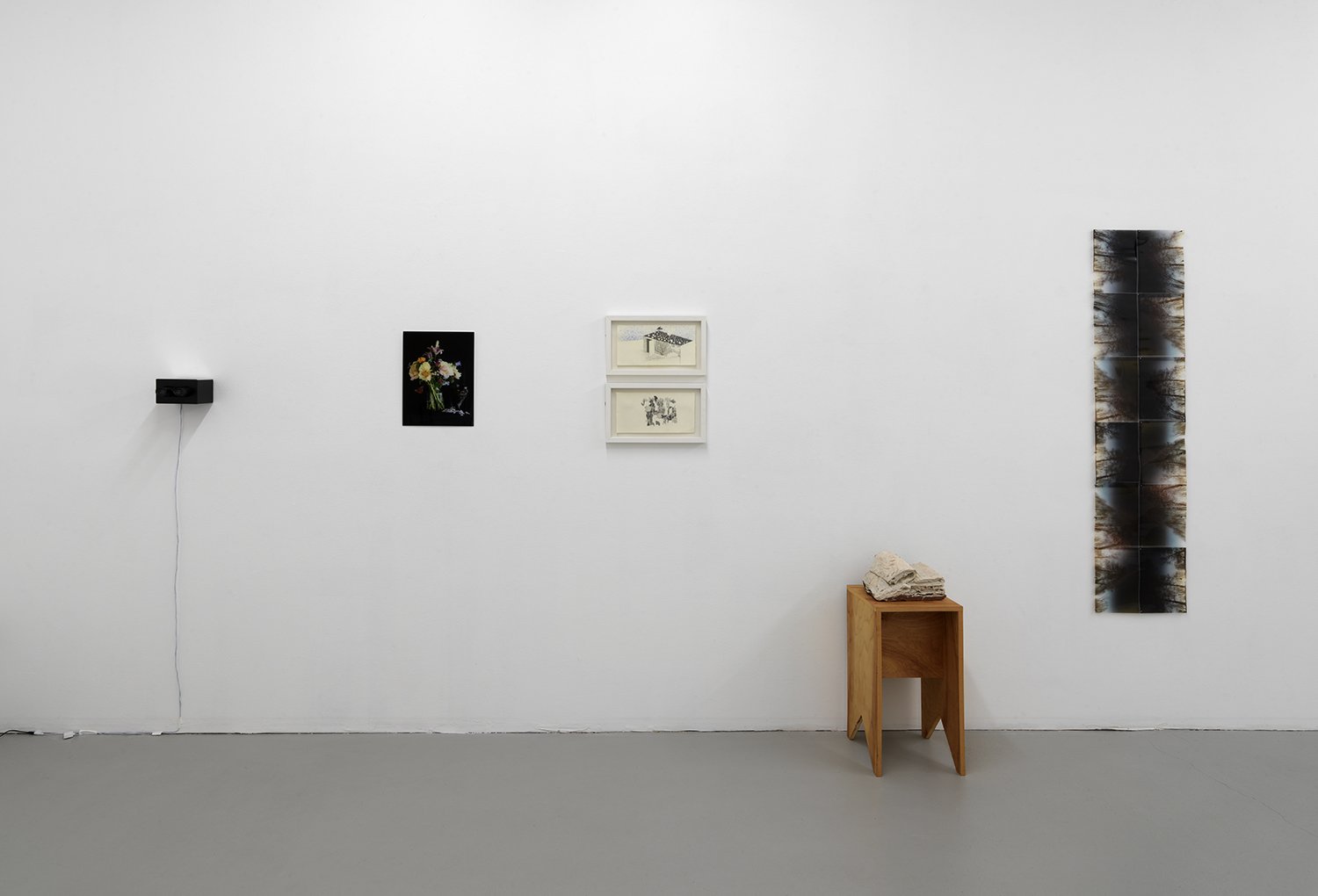

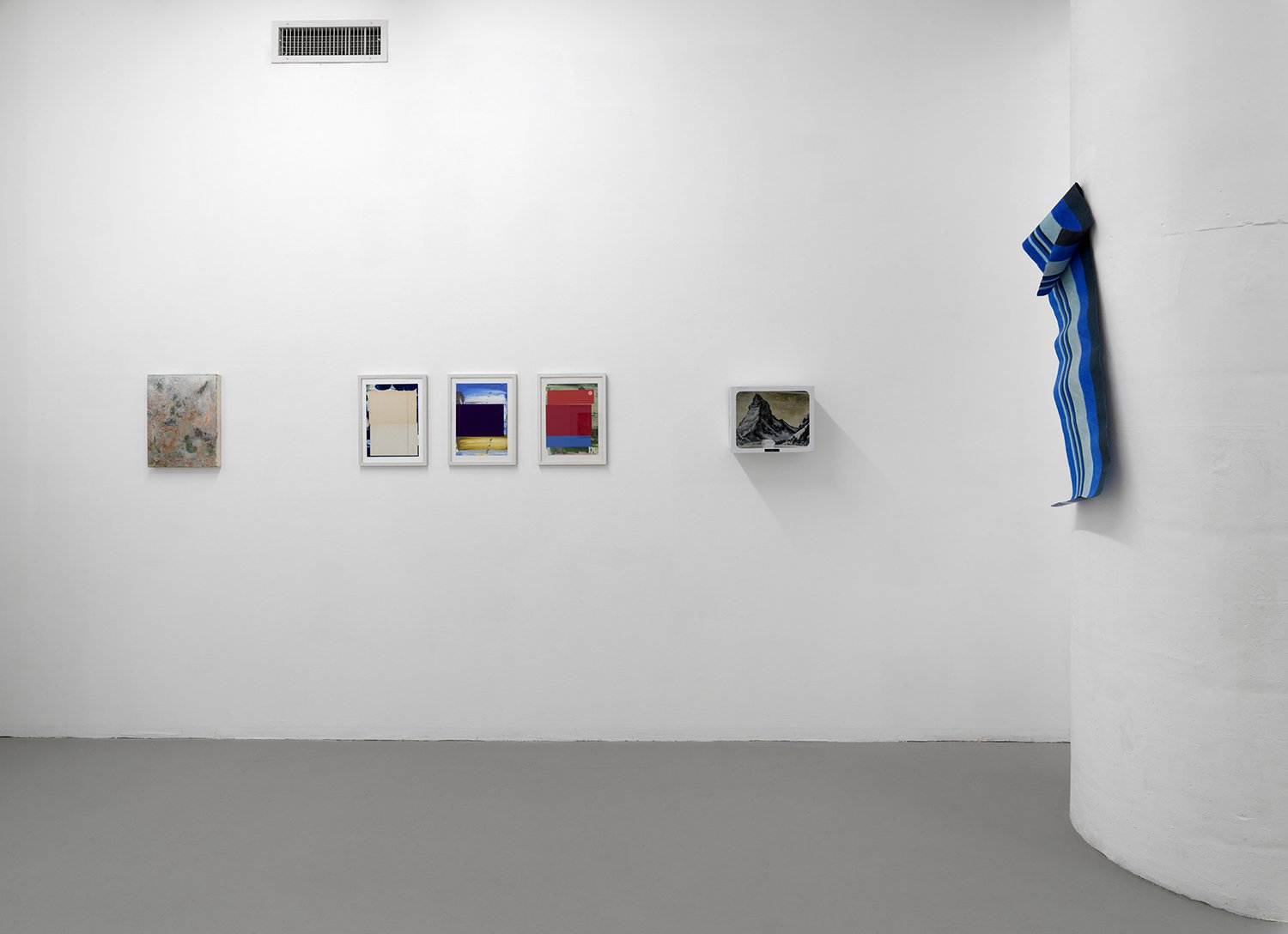
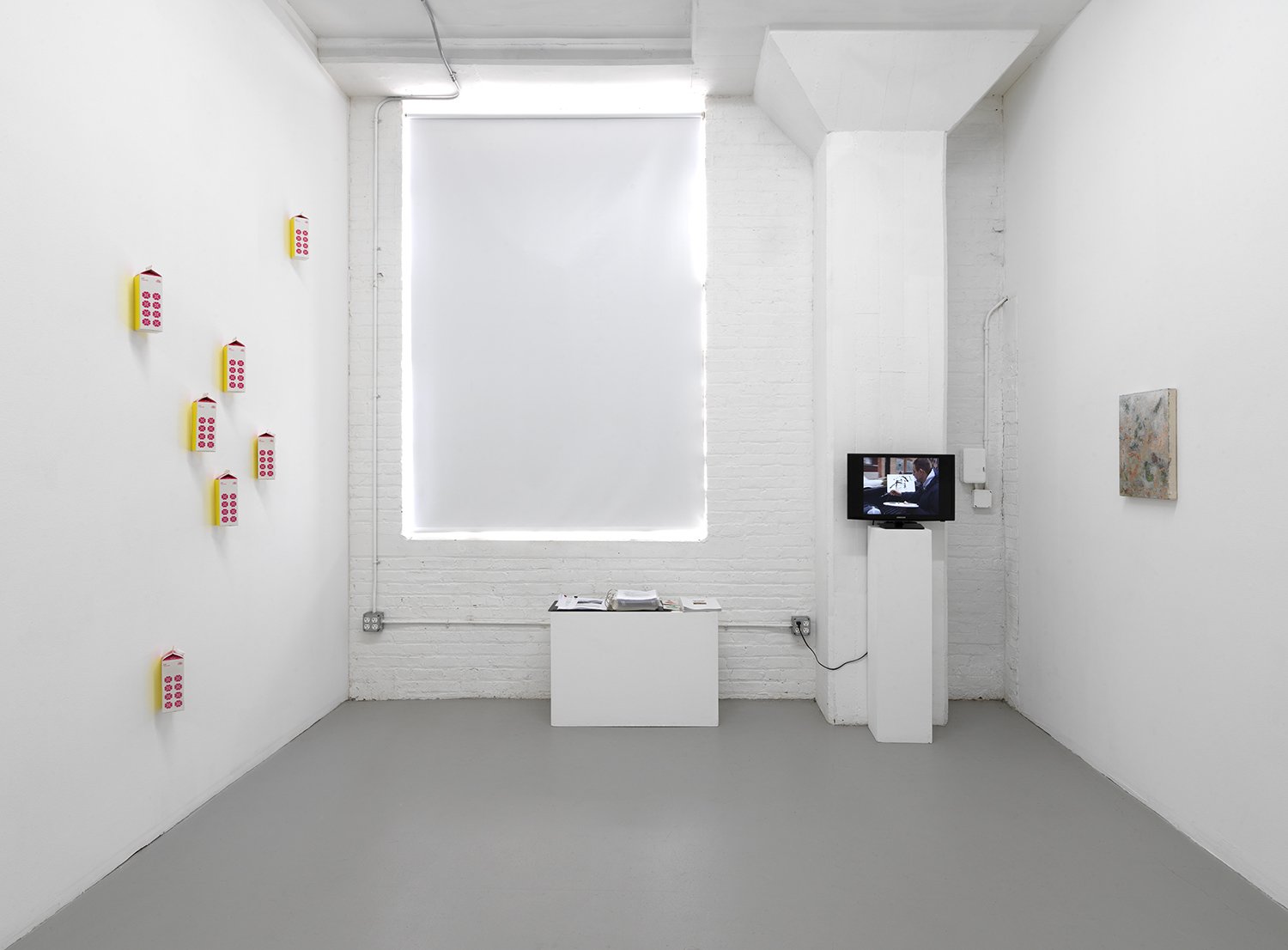
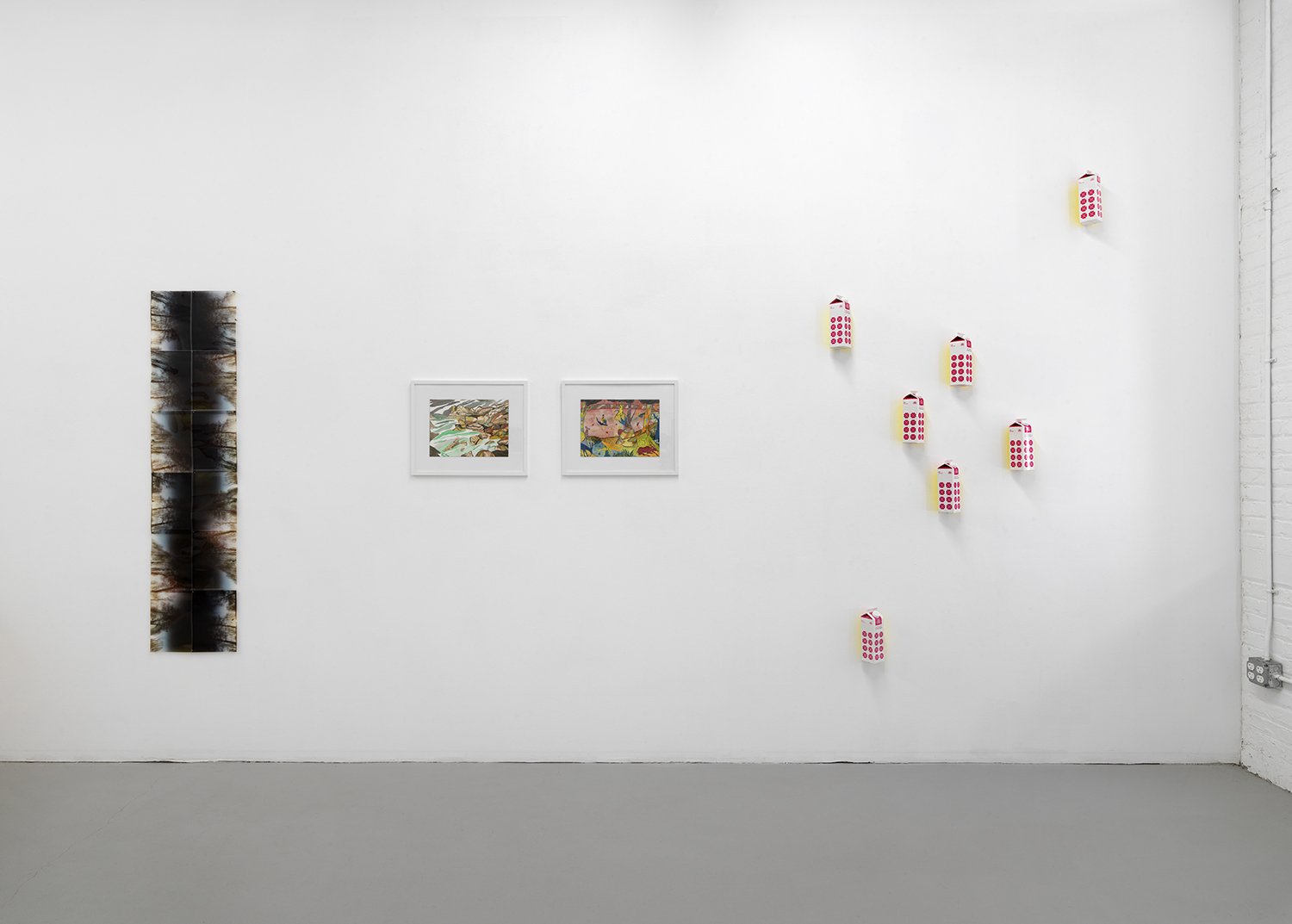
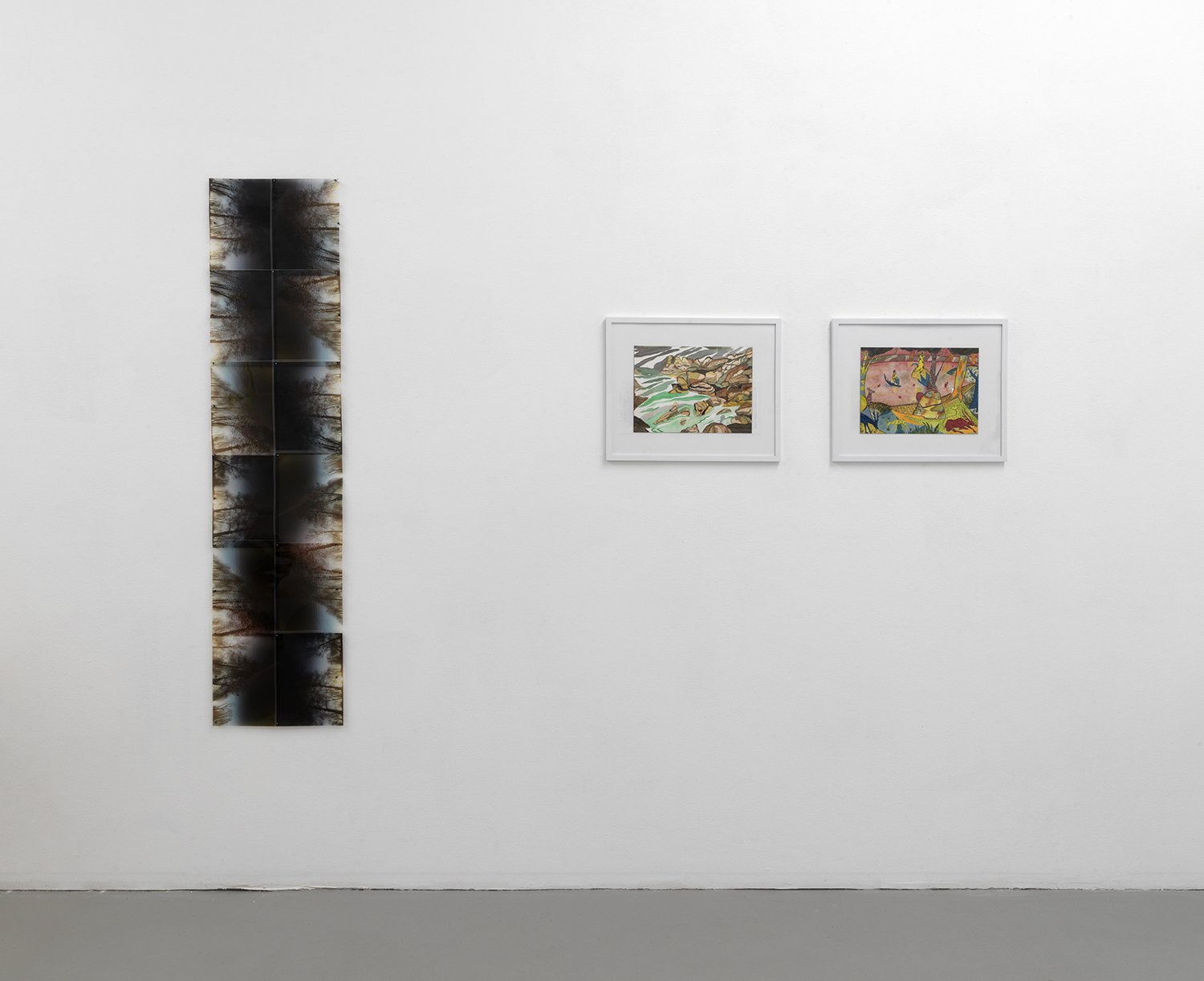
photos by Tom Van Eynde

